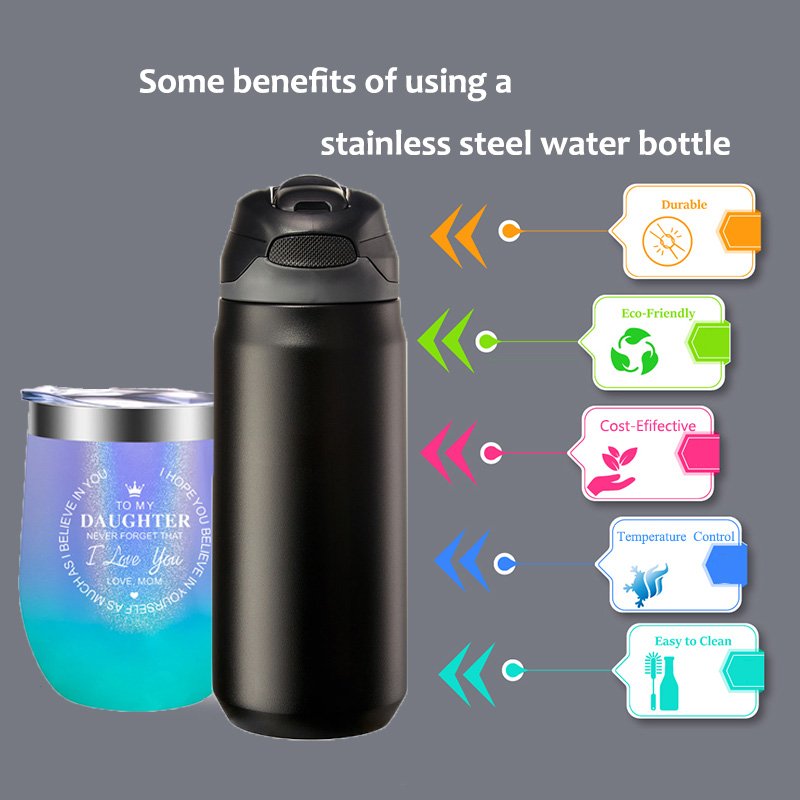When it comes to choosing the right type of bottle for storing liquids, especially water, safety is a top priority. Ceramic bottles have gained popularity for their aesthetic appeal and eco-friendly nature, but there are valid concerns about their safety. In this article, we will delve into the safety aspects of ceramic bottles to help you make an informed decision.
Understanding Ceramic Materials
Ceramic bottles are typically made from clay, which is fired at high temperatures to create a durable and non-porous material. The glazing on the surface of ceramic bottles adds a protective layer and enhances their visual appeal. It’s important to note that not all ceramic materials are created equal, and the safety of the bottles depends on various factors, including the type of clay used, the glazing process, and any potential contaminants.
Factors Affecting Safety
When evaluating the safety of ceramic bottles, several factors come into play:
- Clay Quality: High-quality, food-grade clay is essential for ensuring the safety of ceramic bottles. It’s important to choose bottles made from clay that is free from harmful contaminants and impurities.
- Glazing: The glazing process significantly impacts the safety of ceramic bottles. Properly glazed bottles create a protective barrier that prevents the leaching of harmful substances into the liquid stored inside.
- Lead and Cadmium: One of the primary concerns with ceramic products is the potential presence of lead and cadmium in the glaze. These toxic elements can leach into the contents of the bottle and pose serious health risks.
- Usage and Care: Proper usage and maintenance of ceramic bottles also play a role in ensuring safety. Avoid exposing ceramic bottles to extreme temperature changes, and follow the recommended cleaning and care instructions to prevent damage to the glaze.
It’s important to purchase ceramic bottles from reputable manufacturers who prioritize safety and quality in their production processes. Look for certifications or assurances of food-grade materials and non-toxic glazes when selecting ceramic bottles.
Benefits of Ceramic Bottles
Despite the safety considerations, ceramic bottles offer several benefits that make them an attractive choice for many consumers:
- Eco-Friendly: Ceramic bottles are reusable and contribute to reducing the use of single-use plastics, making them an eco-friendly option.
- Visual Appeal: The aesthetic appeal of ceramic bottles adds a touch of elegance to the act of staying hydrated, making them a popular choice for home and office use.
- Temperature Regulation: Ceramic has natural insulating properties, helping to keep beverages at a consistent temperature for longer periods.
- Flavor Preservation: Unlike some plastic containers, ceramic does not impart any unwanted flavors or odors to the liquids stored inside, preserving the taste and quality of the contents.
Conclusion
In conclusion, the safety of ceramic bottles depends on various factors such as the quality of clay, the glazing process, and the absence of toxic elements. When sourced from reputable manufacturers and used with care, ceramic bottles can offer a safe and stylish way to store your favorite beverages. By understanding the nuances of ceramic materials and making informed choices, you can enjoy the benefits of ceramic bottles while prioritizing safety and peace of mind.
Environmental Impact of Ceramic Bottles
Beyond the safety considerations, the environmental impact of ceramic bottles is another important factor to consider. Ceramic, being a natural and inorganic material, has a lower carbon footprint compared to many synthetic materials like plastic. However, the manufacturing process of ceramic bottles does involve energy-intensive steps, such as mining, processing, and firing the clay at high temperatures.
To minimize the environmental impact of ceramic bottles, consumers should look for bottles made by manufacturers who prioritize sustainable production practices. This can include using renewable energy sources, implementing waste reduction strategies, and ensuring responsible sourcing of raw materials.
Additionally, the long-lasting nature of ceramic bottles means they can be reused multiple times, reducing the need for constant replacement and the associated environmental impact. Proper care and maintenance of ceramic bottles can extend their lifespan, further contributing to their eco-friendly advantages.
Ceramic Bottles and Health Concerns
While ceramic bottles are generally considered safe for storing liquids, there are some potential health concerns that consumers should be aware of. One of the primary concerns is the potential for lead or cadmium leaching from the glaze, as mentioned earlier. Exposure to these heavy metals can have serious health consequences, particularly for young children and pregnant women.
To mitigate this risk, it’s crucial to purchase ceramic bottles from reputable manufacturers that use lead-free and cadmium-free glazes. Additionally, it’s important to avoid using ceramic bottles for storing acidic liquids, such as citrus juices or vinegar, as the acidity can increase the risk of leaching.
Another health concern related to ceramic bottles is the potential for the growth of harmful bacteria if the bottles are not properly cleaned and maintained. Proper cleaning and drying of ceramic bottles after each use, as well as the avoidance of sharing bottles with others, can help minimize the risk of bacterial contamination.
Ceramic Bottles and Food Safety
In addition to the general safety considerations, it’s important to address the specific concerns around using ceramic bottles for storing and consuming food and beverages. While ceramic is a commonly used material in food-grade containers, there are some specific factors to consider:
- Food Contact Safety: Ceramic bottles intended for food and beverage use should be made from materials that are specifically approved for food contact. This ensures that the materials used in the bottle’s construction do not leach harmful substances into the contents.
- Temperature Limitations: Ceramic bottles may have limitations when it comes to exposure to high temperatures, such as hot liquids or dishwasher use. Exceeding the recommended temperature ranges can potentially compromise the integrity of the glaze or the bottle itself, potentially leading to safety issues.
- Absorption and Staining: Ceramic materials can be porous, which means they may absorb liquids and flavors over time. This can lead to potential cross-contamination and staining, which can affect the taste and safety of subsequent uses.
To ensure the safe use of ceramic bottles for food and beverage storage, it’s crucial to follow the manufacturer’s instructions and guidelines. This includes proper cleaning, storage, and temperature recommendations to maintain the integrity and safety of the ceramic material.
Cleaning and Maintenance of Ceramic Bottles
Proper cleaning and maintenance of ceramic bottles are essential for ensuring their longevity and continued safety. Ceramic, while durable, can be susceptible to damage if not cared for properly. Here are some tips for cleaning and maintaining ceramic bottles:
- Handwashing: It’s generally recommended to hand wash ceramic bottles with a mild detergent and warm water. Avoid using abrasive sponges or scrubbers, as they can scratch the surface of the ceramic and potentially compromise the glaze.
- Avoid Dishwashers: Most ceramic bottles are not dishwasher-safe, as the high heat and harsh detergents can damage the glaze and structural integrity of the bottle. If you do choose to use a dishwasher, consult the manufacturer’s instructions and use a gentle cycle.
- Drying and Storage: Ensure that ceramic bottles are thoroughly dried before storing them. Moisture can lead to the growth of mold or bacteria, which can compromise the safety and hygiene of the bottle. Store ceramic bottles in a cool, dry place, away from direct sunlight or heat sources.
- Leak Prevention: Check the bottle’s lid or closure mechanism regularly for any signs of wear or damage. Replacing damaged parts can help prevent leaks and maintain the bottle’s integrity.
- Inspection for Damage: Regularly inspect your ceramic bottles for any cracks, chips, or other signs of wear and tear. Discontinue use of a bottle if you notice any damage, as it can compromise the safety and structural integrity of the container.
By following these cleaning and maintenance guidelines, you can help ensure the longevity and continued safety of your ceramic bottles, allowing you to enjoy their benefits for years to come.
Ceramic Bottles and Sustainability
In addition to the safety and environmental considerations, the sustainability aspect of ceramic bottles is an important factor to examine. As mentioned earlier, ceramic is a natural and inorganic material, which gives it some inherent advantages in terms of sustainability.
One of the key sustainability benefits of ceramic bottles is their durability and longevity. Compared to single-use plastic bottles, ceramic bottles can be used repeatedly, reducing the amount of waste generated. When properly cared for, ceramic bottles can last for many years, providing a more sustainable alternative to disposable containers.
Furthermore, ceramic bottles are often made from locally sourced, natural materials, reducing the environmental impact associated with transportation and production. Additionally, the manufacturing process of ceramic bottles typically involves less energy-intensive processes than the production of synthetic materials like plastic.
To further enhance the sustainability of ceramic bottles, consumers should look for bottles made by manufacturers who prioritize eco-friendly practices, such as using renewable energy sources, implementing waste reduction strategies, and ensuring responsible sourcing of raw materials.
By choosing ceramic bottles over single-use options, consumers can contribute to reducing their environmental footprint and support more sustainable consumption practices.
Ceramic Bottles and Ethical Considerations
Beyond the safety, environmental, and sustainability aspects, the ethical considerations surrounding ceramic bottles are also worth exploring. The production of ceramic bottles can involve various labor practices and supply chain dynamics that may raise ethical concerns.
One key ethical consideration is the working conditions and fair labor practices of the workers involved in the ceramic bottle production process. Ensuring that these workers are paid fairly, work in safe and healthy environments, and have access to appropriate benefits and protections is crucial.
Additionally, the sourcing of raw materials, such as clay, can have ethical implications. It’s important to consider the practices of ceramic bottle manufacturers in terms of responsible and ethical sourcing, ensuring that the extraction and processing of raw materials do not contribute to human rights violations or environmental degradation.
Consumers who are conscious of ethical consumption can look for ceramic bottle brands that are transparent about their production practices and make efforts to ensure fair labor standards and ethical sourcing throughout their supply chain.
By considering the ethical dimensions of ceramic bottle production, consumers can make informed choices that align with their values and contribute to a more socially responsible and equitable marketplace.
Conclusion: Balancing Safety, Sustainability, and Ethics with Ceramic Bottles
Ceramic bottles offer a range of benefits, from their aesthetic appeal and temperature regulation properties to their eco-friendly and sustainable features. However, as with any consumer product, it’s essential to consider the various safety, environmental, and ethical factors associated with their use.
When it comes to safety, the key considerations revolve around the quality of the ceramic material, the composition and safety of the glaze, and the proper usage and maintenance of the bottles. Consumers should prioritize purchasing ceramic bottles from reputable manufacturers that prioritize food-grade materials and non-toxic production processes.
The environmental impact of ceramic bottles is generally lower than that of single-use plastic containers, but the manufacturing process still has an ecological footprint. Consumers can further enhance the sustainability of ceramic bottles by choosing brands that utilize renewable energy, implement waste reduction strategies, and ensure responsible sourcing of raw materials.
Ethical considerations, such as fair labor practices and ethical sourcing, are also important factors to weigh when selecting ceramic bottles. Consumers can support brands that are transparent about their production processes and demonstrate a commitment to social responsibility.
By carefully balancing the safety, sustainability, and ethical factors associated with ceramic bottles, consumers can make informed choices that align with their values and contribute to a more responsible and environmentally conscious consumer landscape.



